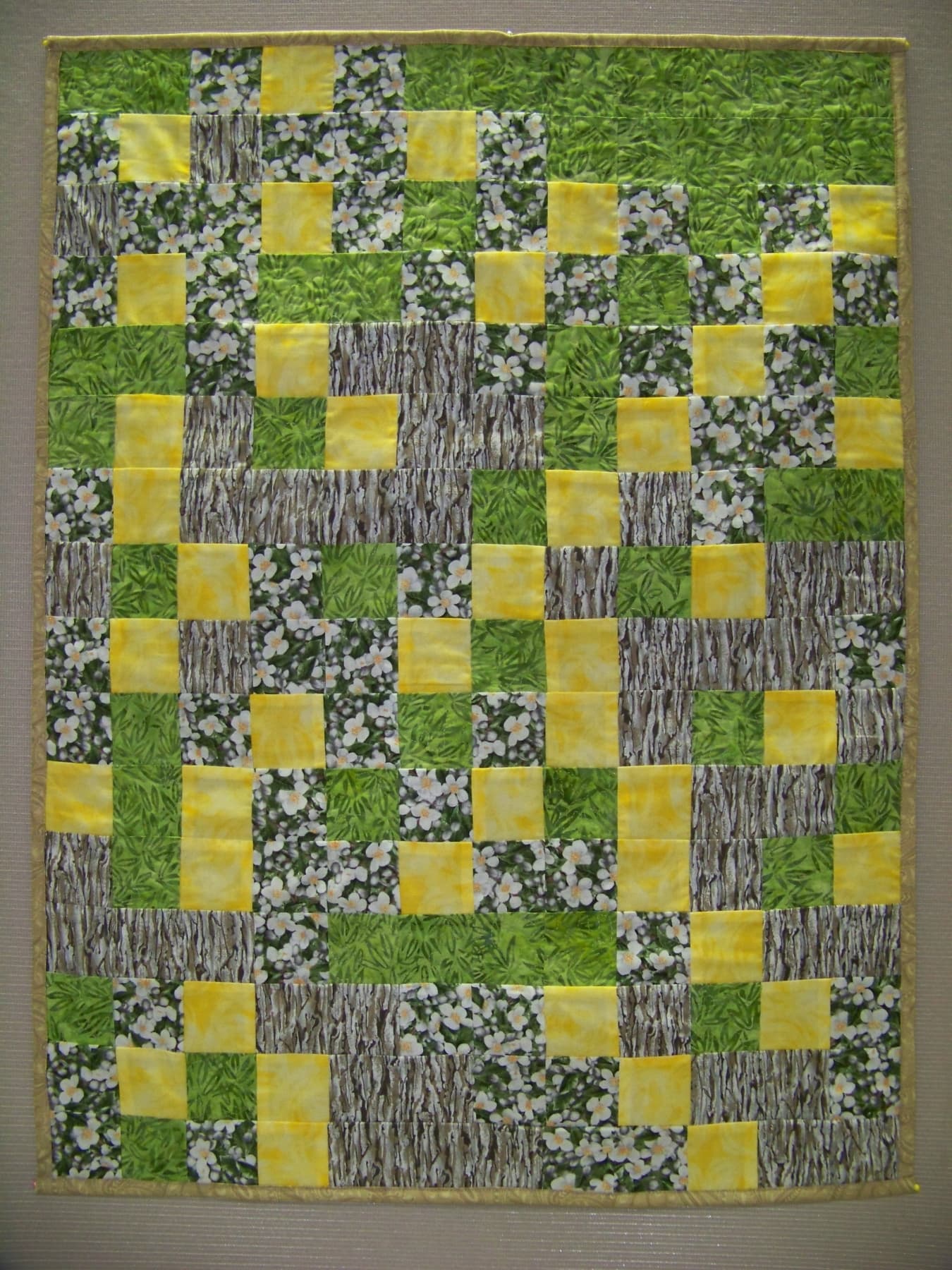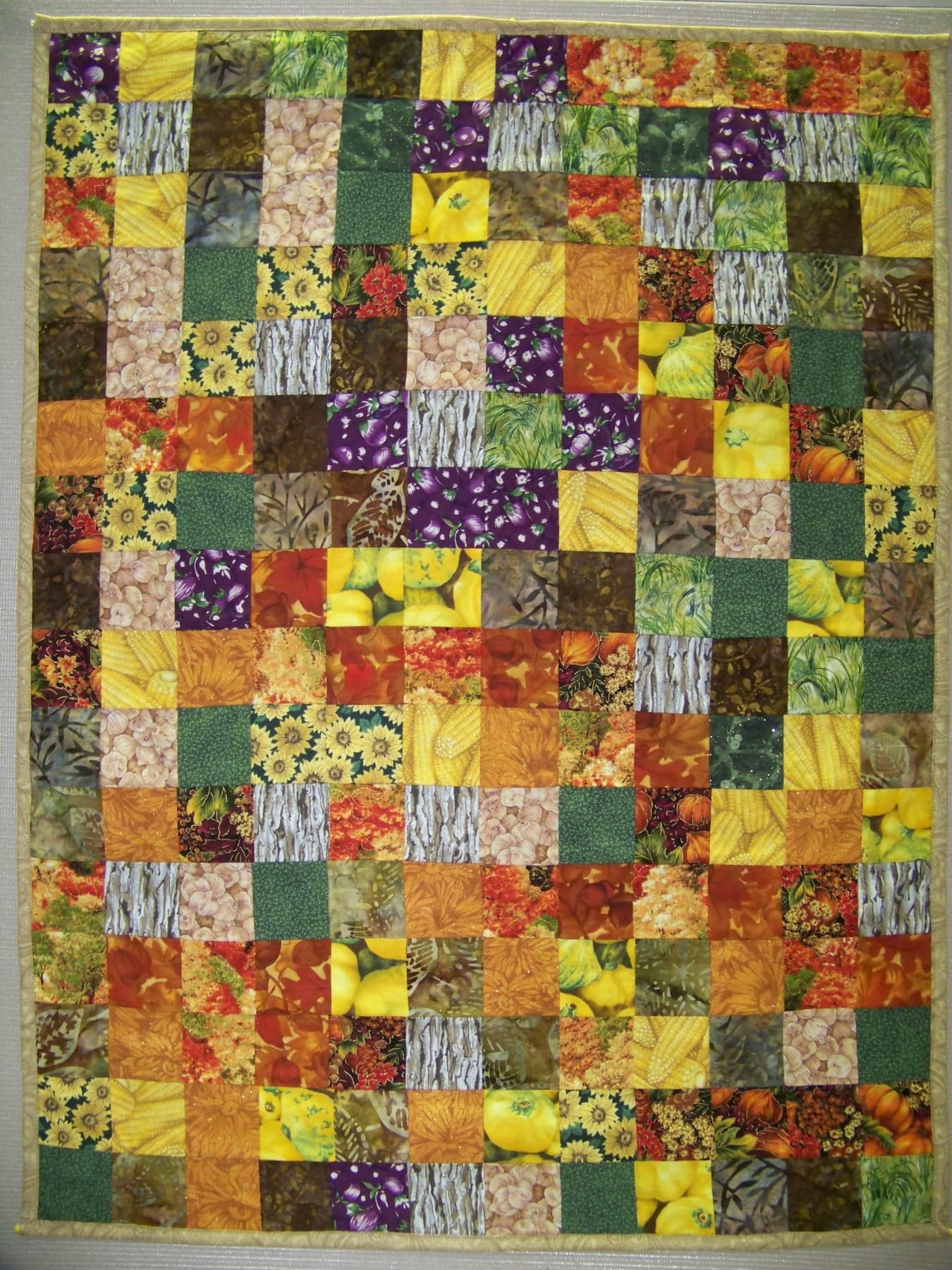2012 Joint Mathematics Meetings
Jeff Suzuki and Jacqui Burke
Artists
Jeff Suzuki and Jacqui Burke
Associate Professor of Mathematics/spouse
Brooklyn College
Brooklyn, NY
Statement
These quilts are based on "Rule 30" (in Wolfram's classification of elementary cellular automata), applied to a cylindrical phase space. "Winter" is the basic rule 30 to produce a two-color pattern. The successive patterns combine the history of two ("Spring"), three ("Summer", not submitted), or four ("Fall") generations to produce a palette of four, eight, or sixteen colors.
Artworks

Spring
24" by 36"
quilt
2011
This is "Rule 30" (in Wolfram's classification for elementary cellular automata), applied to a cylindrical phase space. The colors are determined by the history of a cell at times t = 2k and 2k + 1, treated as a two-bit number between 0 and 3.

Fall
24" by 36"
quilt
2011
This is "Rule 30" (in Wolfram's classification for elementary cellular automata), applied to a cylindrical phase space. The colors are determined from the history of a cell at times t = 4k, 4k + 1, 4k + 2, and 4k + 3, which is treated as a four-bit number between 0 and 15.